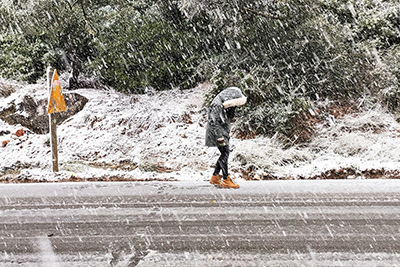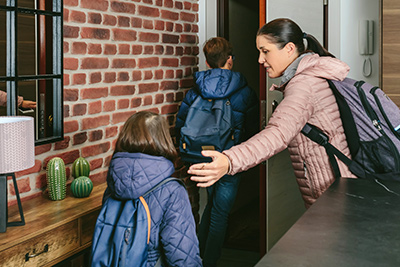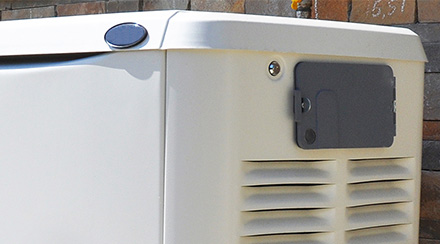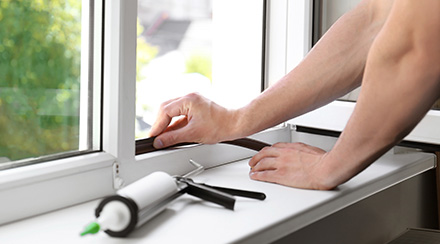What Is a Nor’easter Storm And How Do You Prepare for One?
Not all storms are equal, and some have such unique characteristics that they’ve earned their own whimsical nicknames. You may have heard the term “nor’easter” to refer to storms before, but what are they? How do they differ from other storms? And what should you do if you’re in the path of a predicted nor’easter?
What Is a Nor’easter?

A nor’easter is a type of storm that forms along the East Coast of the U.S. and often affects the New England region. It’s named for its northeasterly winds, which are uncommon for storms of this type. A nor’easter is an extratropical cyclone that tends to carry lots of moisture. It differs from tropical cyclones because it is a cold-core storm that draws energy from the temperature differences between cold air and warm water, rather than warm-core cyclones that draw energy entirely from warm temperatures.
Nor’easters are most common between September and April, and often bring heavy rain or snow, gale force winds and the risk of coastal flooding. Some nor’easters are historic, such as the Great Blizzard of 1888, which dumped up to 50 inches of snow in some areas and killed 400 people, and the 1991 Perfect Storm, in which a nor’easter collided with a tropical cyclone and caused devastating flooding along the coast of Massachusetts and neighboring states.
What Causes Nor’easters?
Nor’easters tend to form within 100 miles of the Atlantic Coast, usually between Georgia and New Jersey. Cold air from Canada flows southeast toward the East Coast, following the jet stream, and encounters warm ocean waters in the middle of the Atlantic Coast. There, the jet stream carries the cold air northeast, forming a low pressure system over increasingly warm water.
This is the perfect breeding ground for nor’easters. Storms are common over these open waters, and if they organize into cyclones, they can bring punishing conditions to the coastal communities that lie to the north.
What to Do Before, During and After a Nor’easter Storm

Nor’easters vary in intensity, duration and the type of precipitation they bring. They can also have dramatically different effects on coastal residents compared to those living several miles inland. If you’re in the Northeastern U.S. when one of these storm systems develops, you should pay close attention to the specific warnings issued for your local area.
Preparation for nor’easters and other severe storms should begin well in advance, when the weather is calm:
- Make arrangements to ride out the storm at home or in a safe shelter, if at all possible. Discuss with your employer the possibility of working from home or temporarily closing the office, if appropriate. Reschedule non-emergency appointments.
- Top off your car’s gas tank with fuel and park it carefully before the storm, ideally in a covered garage. If street parking is the only spot available to you, fold in your side view mirrors and be prepared to have to dig out your car later if there is significant snowfall.
- Make sure your pets are indoors and safe at home or in another suitable, heated, indoor shelter.
- Unplug sensitive electronics that are not in use, unless they are protected with a working surge protector. Strong storms can damage power lines and transformers, increasing the risk of sudden power surges that can damage electronics and appliances.
- Keep your home warm with an emergency generator in case the power goes out.
During the storm itself, you should stay indoors whenever possible and keep tabs on the weather conditions online or with local TV or radio news. If a power outage occurs, keep your refrigerator closed to preserve perishable food for as long as possible. Call your local electrical utility or police department if you can see downed power lines from your home or shelter.
After a nor’easter passes, it’s still important to proceed with caution:
- Continue to monitor local TV, radio, websites and apps for information on evacuation orders, road conditions, power outages and official instructions.
- If you are able to do so safely, check on nearby neighbors, especially those who are elderly, have large or young families, have disabilities or are caregivers.
- If you notice damage to your property, take photos for use in a possible homeowners insurance claim. Avoid driving on snowy roads. If there is snow accumulation, avoid driving until the roads are clear.
- Throw out any refrigerated foods that may have gone bad - like meat, seafood, leftovers, milk, eggs, soft cheese and sliced produce - if you experience a power outage of four hours or more. Frozen food can last up to 48 hours without power in a full freezer, and 24 hours in a half-full freezer. Use this guide from FoodSafety.gov for more specific instructions on food safety after a power outage.
Nor’easters are powerful storms that can disrupt everyday life and pose real risks to motorists, pedestrians and people living in coastal areas. But with preparation and close attention to developing weather conditions, residents in the Northeastern U.S. can weather these storms safely.
Looking for Something Specific?
Select a category to find resources for topics that interest you.
Select Category

Related Articles:

What to Do Before, During and After Power Outages
With a little knowledge and preparation, you can protect yourself, your home and your belongings during power outages of any duration.
Read Article
How to Choose a Generator for Your Home
Power outages can be miserable, but with the right generator, you can keep your family safe and comfortable until power is restored. Learn how to choose the best generator for your home.
Read Article
Weatherize Your Home for Summer
The extreme heat of summer can really do a number on your energy bills. But if you’re able to invest a little time and money into weatherizing to keep your home cool, you can help yourself and your family remain comfortable at home while still saving energy.
Read ArticleWhat Is a Nor’easter Storm And How Do You Prepare for One?
Not all storms are equal, and some have such unique characteristics that they’ve earned their own whimsical nicknames. You may have heard the term “nor’easter” to refer to storms before, but what are they? How do they differ from other storms? And what should you do if you’re in the path of a predicted nor’easter?
What Is a Nor’easter?
A nor’easter is a type of storm that forms along the East Coast of the U.S. and often affects the New England region. It’s named for its northeasterly winds, which are uncommon for storms of this type. A nor’easter is an extratropical cyclone that tends to carry lots of moisture. It differs from tropical cyclones because it is a cold-core storm that draws energy from the temperature differences between cold air and warm water, rather than warm-core cyclones that draw energy entirely from warm temperatures.
Nor’easters are most common between September and April, and often bring heavy rain or snow, gale force winds and the risk of coastal flooding. Some nor’easters are historic, such as the Great Blizzard of 1888, which dumped up to 50 inches of snow in some areas and killed 400 people, and the 1991 Perfect Storm, in which a nor’easter collided with a tropical cyclone and caused devastating flooding along the coast of Massachusetts and neighboring states.
What Causes Nor’easters?
Nor’easters tend to form within 100 miles of the Atlantic Coast, usually between Georgia and New Jersey. Cold air from Canada flows southeast toward the East Coast, following the jet stream, and encounters warm ocean waters in the middle of the Atlantic Coast. There, the jet stream carries the cold air northeast, forming a low pressure system over increasingly warm water.
This is the perfect breeding ground for nor’easters. Storms are common over these open waters, and if they organize into cyclones, they can bring punishing conditions to the coastal communities that lie to the north.
What to Do Before, During and After a Nor’easter Storm
Nor’easters vary in intensity, duration and the type of precipitation they bring. They can also have dramatically different effects on coastal residents compared to those living several miles inland. If you’re in the Northeastern U.S. when one of these storm systems develops, you should pay close attention to the specific warnings issued for your local area.
Preparation for nor’easters and other severe storms should begin well in advance, when the weather is calm:
- Make arrangements to ride out the storm at home or in a safe shelter, if at all possible. Discuss with your employer the possibility of working from home or temporarily closing the office, if appropriate. Reschedule non-emergency appointments.
- Top off your car’s gas tank with fuel and park it carefully before the storm, ideally in a covered garage. If street parking is the only spot available to you, fold in your side view mirrors and be prepared to have to dig out your car later if there is significant snowfall.
- Make sure your pets are indoors and safe at home or in another suitable, heated, indoor shelter.
- Unplug sensitive electronics that are not in use, unless they are protected with a working surge protector. Strong storms can damage power lines and transformers, increasing the risk of sudden power surges that can damage electronics and appliances.
- Keep your home warm with an emergency generator in case the power goes out.
During the storm itself, you should stay indoors whenever possible and keep tabs on the weather conditions online or with local TV or radio news. If a power outage occurs, keep your refrigerator closed to preserve perishable food for as long as possible. Call your local electrical utility or police department if you can see downed power lines from your home or shelter.
After a nor’easter passes, it’s still important to proceed with caution:
- Continue to monitor local TV, radio, websites and apps for information on evacuation orders, road conditions, power outages and official instructions.
- If you are able to do so safely, check on nearby neighbors, especially those who are elderly, have large or young families, have disabilities or are caregivers.
- If you notice damage to your property, take photos for use in a possible homeowners insurance claim. Avoid driving on snowy roads. If there is snow accumulation, avoid driving until the roads are clear.
- Throw out any refrigerated foods that may have gone bad - like meat, seafood, leftovers, milk, eggs, soft cheese and sliced produce - if you experience a power outage of four hours or more. Frozen food can last up to 48 hours without power in a full freezer, and 24 hours in a half-full freezer. Use this guide from FoodSafety.gov for more specific instructions on food safety after a power outage.
Nor’easters are powerful storms that can disrupt everyday life and pose real risks to motorists, pedestrians and people living in coastal areas. But with preparation and close attention to developing weather conditions, residents in the Northeastern U.S. can weather these storms safely.
Looking for Something Specific?
Select a category to find resources for topics that interest you.
Select Category

Related Articles:

What to Do Before, During and After Power Outages
With a little knowledge and preparation, you can protect yourself, your home and your belongings during power outages of any duration.
Read Article
How to Choose a Generator for Your Home
Power outages can be miserable, but with the right generator, you can keep your family safe and comfortable until power is restored. Learn how to choose the best generator for your home.
Read Article
Weatherize Your Home for Summer
The extreme heat of summer can really do a number on your energy bills. But if you’re able to invest a little time and money into weatherizing to keep your home cool, you can help yourself and your family remain comfortable at home while still saving energy.
Read Article






